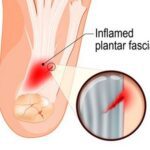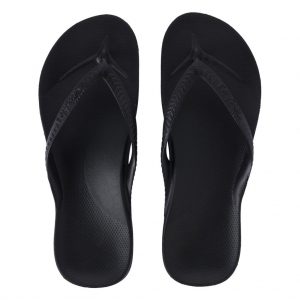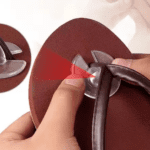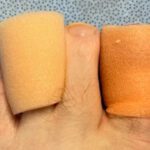If you have plantar fasciitis and want to fix it, then do this:
Plantar fasciitis is common and is often commonly mismanaged which can lead it to being a chronic problem. If you have it, and find your way here, then you probably know what it is. If not, then see this for more. There is plenty of advice online about what to do about it, a lot of it is somewhat misguided as there are no such thing as instant cures and most of the magical cures you come across do not work for more than a limited number of people. A lot of the advice lacks a scientific evidence base and is often just supported by anecdotes and testimonials.
Here is our guide to dealing with plantar fasciitis
- Pain relief: Use a hot pack to rest the foot on to get some heat deep into the foot. Follow that with an anti-inflammatory cream such as fisiocrem or similar to rub in. Massage the arch of the foot with something like a glass Coca-Cola bottle or the Pediroller. If stronger pain relief is needed, then prescription medicines may be needed in the short term.
- Loose weight: The evidence is clear on how a higher body weight is a significant risk factor for plantar fasciitis, so loosing weight over the long term will be of great help (and also help your general health as well!). That does not mean that the other strategies mentioned here can not help improve the symptoms in the short and medium term. If you are serious about this, then get the right help and support.
- Improve foot biomechanics: Poor foot biomechanics are a common issue in plantar fasciitis. The use of some sort of arch support or foot orthotic is commonly recommended to support the arch and relieve some of the strain in the plantar fascia. You can start here with these arch supports and progress later to custom made foot orthotics from a podiatrist if needed and indicated.
- Stretch: The evidence is also clear on tight calf muscles being a significant risk factor and stretching being helpful to improve plantar fasciitis. Stretch the calf muscles at least once a day. Even better, use a night splint that really does help stretch the calf muscle and the plantar fascia. They are really helpful if you have that first step pain in the morning.
- Strengthen: The stronger the arch muscles are, the more load the muscles can take off the plantar fascia and help over the medium to longer term. We recommend the Fasciitis Fighter for this.
This should take care of most cases of plantar fasciitis. It not, then seeking the help of a podiatrist or other appropriate health professional who can use other modalities such as custom made foot orthotics, shockwave therapy or injection therapy to help facilitate the healing.
Related Plantar Fasciitis Products
-
Archies Thongs
$39.95 incl GST Select options This product has multiple variants. The options may be chosen on the product page -
Cushioning Heel Cups (2 Sets)
$17.80 – $19.80 incl GST Select options This product has multiple variants. The options may be chosen on the product page -
Fasciitis Fighter
$33.95 incl GST Add to cart -
fisiocrem
$18.95 – $48.95 incl GST Select options This product has multiple variants. The options may be chosen on the product page -
Night Splint for Plantar Fasciitis
$36.50 incl GST Add to cart -
PediRoller
$24.70 incl GST Add to cart -
Simple Arch Supports
$25.00 incl GST Select options This product has multiple variants. The options may be chosen on the product page
For more on the research evidence on plantar fasciitis, see these threads on plantar fasciitis at Podiatry Arena.





















